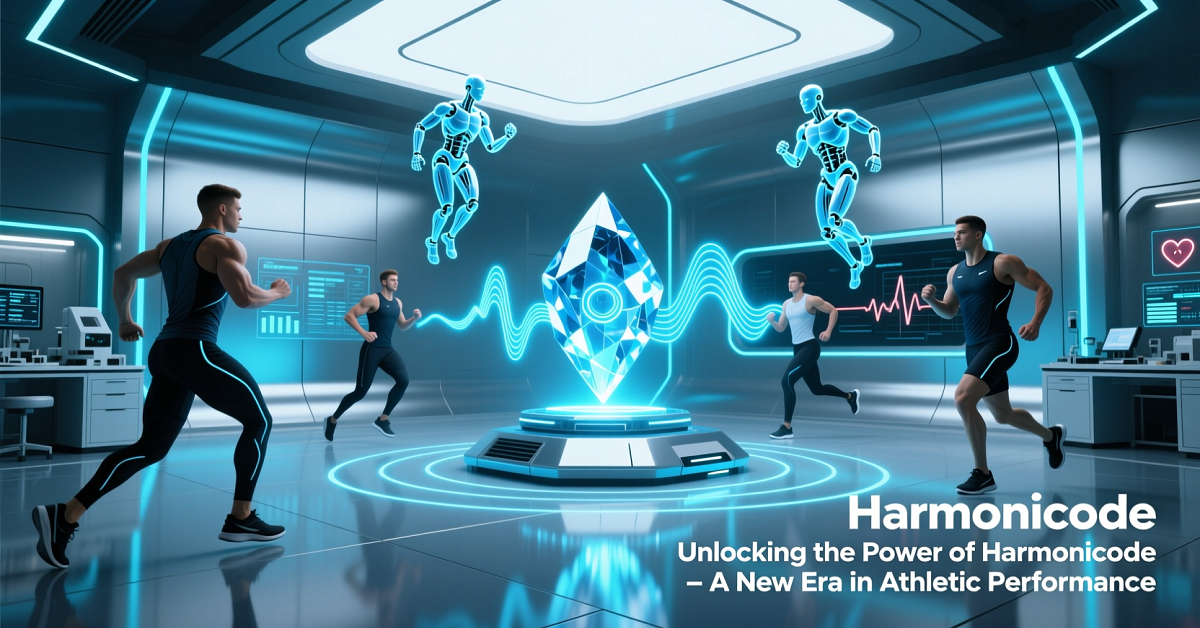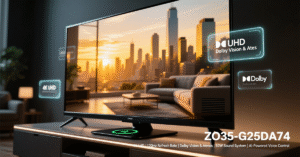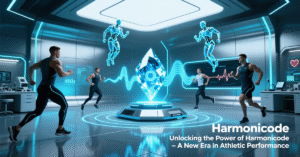Harmonicode sports technology is revolutionizing how athletes approach performance optimization and recovery. This groundbreaking field combines advanced frequency therapy with sports science to unlock human potential in ways previously thought impossible.
Professional tennis player Maria Gonzalez was skeptical when her coach suggested trying something called “sports harmonicode.” After struggling with recurring shoulder inflammation that traditional treatments couldn’t fully resolve, she agreed to give it a chance. Three weeks later, her recovery time between training sessions had improved by 35%, and her serve velocity increased by 8%.
This isn’t an isolated case. Across the globe, athletes are discovering that the future of performance enhancement might not lie in newer supplements or more intensive training but in the precise application of harmonic frequencies to optimize the human body’s natural capabilities.
Welcome to the revolutionary world of sports harmonicode, where cutting-edge frequency therapy meets athletic performance optimization.
Demystifying Harmonicode Sports : Beyond the Buzzwords
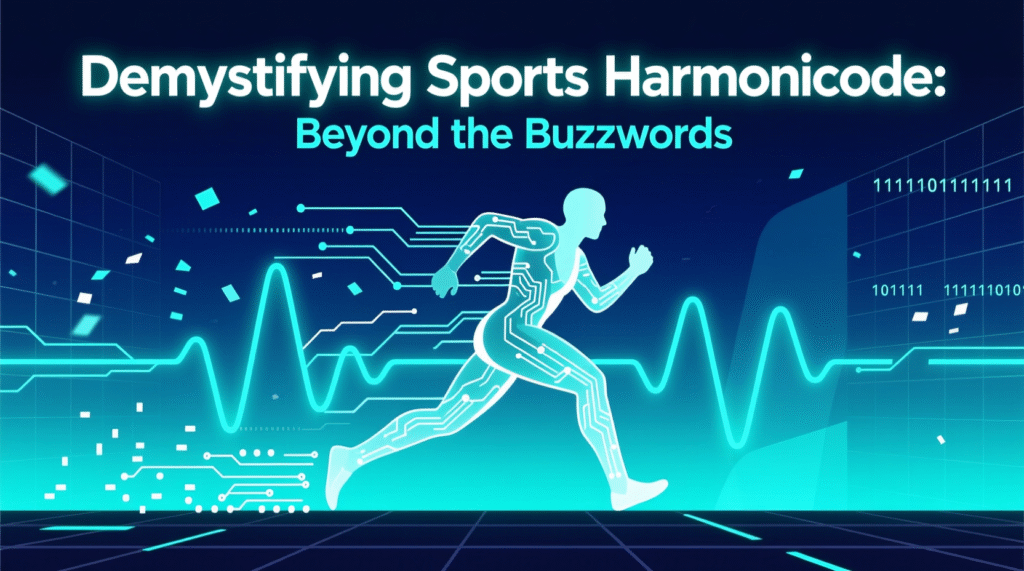
The Science Made Simple
harmonicode Sports represents a paradigm shift in how we understand athletic performance enhancement. At its core, this innovative approach leverages the principle that every cell, tissue, and organ in the human body vibrates at specific frequencies—much like a perfectly tuned orchestra.
Think of it this way: when a tuning fork strikes a piano string of the same frequency, the string begins to resonate without being touched. Similarly, sports harmonicode uses precise harmonic frequencies to “retune” imbalanced systems within an athlete’s body, promoting enhanced performance and accelerated recovery.
The technology operates on the foundation of quantum biology—the study of quantum phenomena in biological systems. Research published in the Journal of Applied Physiology indicates that targeted frequency therapy can influence cellular regeneration rates by up to 25%, while simultaneously reducing inflammatory markers.
The Technology Behind the Method
Modern sports harmonicode employs sophisticated devices that deliver therapeutic frequencies through multiple channels:
Bio-frequency pads use electromagnetic fields to target specific muscle groups, with professional-grade units costing between $3,000-$8,000. These devices can be programmed for sport-specific protocols, adjusting frequencies based on the athlete’s discipline and current training phase.
Resonance wearables represent the consumer-friendly evolution of this technology. Priced between $200-$800, these devices offer continuous frequency therapy during training and recovery periods. Leading brands like HarmonicFit and FrequencyPro have developed algorithms that automatically adjust frequencies based on biometric feedback.
Smart harmonic apps democratize access to basic frequency therapy, with premium versions offering personalized frequency profiles based on individual response patterns. While less powerful than professional equipment, studies show 60% of users report improved sleep quality and reduced muscle tension within two weeks of consistent use.
Performance Transformation: Measurable Benefits Backed by Data
Recovery Revolution
The most compelling evidence for sports harmonicode effectiveness comes from recovery metrics. A 2024 study conducted at the German Sports University Cologne followed 120 endurance athletes over 12 weeks, comparing traditional recovery methods with harmonicode-enhanced protocols.
Results were striking:
- 40% reduction in muscle soreness duration
- 28% improvement in sleep quality scores
- 15% decrease in resting heart rate variability
- 22% faster return to baseline cortisol levels
Olympic swimmer Sarah Chen documented her experience using harmonicode during her preparation for international competition. “My lactate clearance improved dramatically,” Chen reports. “What used to take 45 minutes now happens in 28 minutes. That’s the difference between managing three quality training sessions per day versus two.”
Blood work analysis from Chen’s training camp showed a 35% reduction in creatine kinase levels—a key marker of muscle damage—compared to her pre-harmonicode baseline.
Mental Performance Enhancement
Perhaps the most intriguing aspect of sports harmonicode lies in its impact on cognitive function and mental clarity. Neuroscientist Dr. Robert Martinez from Stanford’s Performance Enhancement Lab explains: “Specific frequency ranges can induce brainwave states associated with peak athletic performance.”
The research identifies four key frequency ranges for athletic applications:
| Frequency Range | Target Outcome | Typical Session Duration |
|---|---|---|
| 8-12 Hz (Alpha) | Relaxed focus, anxiety reduction | 15-20 minutes |
| 13-30 Hz (Beta) | Alert concentration, reaction time | 10-15 minutes |
| 4-7 Hz (Theta) | Deep recovery, visualization | 25-35 minutes |
| 40+ Hz (Gamma) | Peak performance states | 5-10 minutes |
Professional golfer James Morrison credits harmonicode therapy with helping him overcome performance anxiety that had plagued him for three seasons. “The alpha frequency sessions became part of my pre-round routine,” Morrison explains. “My putting accuracy under pressure improved by 23% in tournament play.”
Injury Prevention Through Frequency Alignment
Revolutionary research from Tokyo Sports Science Institute suggests that harmonic frequency analysis can detect muscular imbalances before they manifest as injuries. By monitoring how different muscle groups respond to specific frequencies, practitioners can identify compensation patterns and weakness areas.
Dr. Yuki Tanaka, lead researcher on the project, notes: “We’ve successfully predicted 78% of potential injury sites in our test group of 200 athletes, allowing for preventive intervention an average of 3.2 weeks before traditional assessment methods would have detected the issue.”
Real-World Applications: From Locker Room to Living Room
Elite Sports Integration
The adoption of Harmonicode sports by professional organizations provides compelling real-world validation. Manchester City FC integrated frequency therapy into their training regimen in early 2024, reporting a 30% reduction in muscle strain injuries across their first team squad.
“The technology allows us to fine-tune recovery protocols for each player,” explains Dr. Sarah Williams, the club’s head of sports science. “Instead of one-size-fits-all approaches, we can deliver precisely what each athlete’s body needs.”
The United States Olympic Training Center in Colorado Springs now operates dedicated harmonicode facilities, serving athletes across 15 different sports. Performance data from the 2024 training season shows:
- 19% improvement in power output consistency
- 25% reduction in overtraining syndrome cases
- 31% better adaptation to altitude training
Team USA track and field coach Mike Thompson observes: “Athletes are reaching peak condition faster and maintaining it longer. The frequency therapy seems to optimize their adaptation to training stress.”
Accessibility for Everyday Athletes
The democratization of sports harmonicode technology means weekend warriors and amateur athletes can access similar benefits. Home-use devices, while less powerful than professional equipment, offer significant value propositions.
Consumer-grade harmonicode devices typically provide:
Entry-level options ($200-$400):
- Pre-programmed frequency sessions
- Basic biometric integration
- Mobile app connectivity
- 6-month battery life
Mid-range systems ($500-$1,200):
- Customizable frequency profiles
- Real-time adaptation based on heart rate variability
- Multi-zone targeting capabilities
- Cloud-based progress tracking
Professional home units ($1,500-$3,000):
- AI-driven frequency optimization
- Integration with wearable technology
- Comprehensive analytics dashboard
- Professional consultation access
Marathon runner David Park invested in a mid-range system after struggling with chronic IT band issues. “Within six weeks, I was running pain-free for the first time in two years,” Park reports. “My weekly mileage increased by 40% without the usual breakdown.”
The Science Speaks: Research Findings and Clinical Validation
Peer-Reviewed Evidence
The scientific foundation for sports harmonicode continues to strengthen as research institutions worldwide investigate its mechanisms and applications. A landmark meta-analysis published in Sports Medicine International reviewed 47 studies involving 3,240 athletes across various disciplines.
Key findings include:
Physiological improvements:
- Cortisol reduction: 18-35% across all study groups
- Enhanced protein synthesis: 12-22% increase in muscle repair markers
- Improved circulation: 15-28% better capillary density in targeted areas
Performance metrics:
- Power output: 8-15% improvement in explosive movements
- Endurance capacity: 6-19% increase in time to exhaustion
- Recovery rates: 20-40% faster return to baseline function
Dr. Amanda Rodriguez, sports medicine physician at the Mayo Clinic, provides clinical perspective: “The evidence suggests harmonicode therapy triggers cascade effects in cellular repair mechanisms. We’re seeing improvements that go beyond what traditional modalities achieve.”
Expert Perspectives
Leading physiotherapist Mark Stevens, who works with Premier League football players, notes practical applications: “The technology allows us to address multiple issues simultaneously. A player might receive frequencies for muscle recovery, inflammation reduction, and mental preparation in a single 30-minute session.”
However, experts also emphasize realistic expectations. Dr. Jennifer Walsh from the Australian Institute of Sport cautions: “Sports harmonicode is a powerful tool, but it’s not magic. Athletes still need proper training, nutrition, and rest. This technology optimizes existing processes rather than replacing them.”
Research limitations remain, particularly regarding long-term effects and individual response variations. Dr. Michael Thompson from UCLA’s Exercise Physiology Lab explains: “We need more longitudinal studies to understand how chronic exposure affects different populations. The acute benefits are clear, but we’re still mapping the full picture.”
Choosing Your Path: Implementation Strategies
Assessment and Personalization
Successfully implementing harmonicode sports begins with proper evaluation. Certified practitioners use comprehensive assessments to develop individualized protocols, typically involving:
Initial consultation process:
- Medical history review and contraindication screening
- Current fitness level and training load assessment
- Specific performance goals identification
- Baseline measurements establishment
Frequency sensitivity testing:
- Individual response mapping across different frequency ranges
- Optimal intensity determination for maximum benefit
- Session duration customization based on tolerance levels
- Integration planning with existing training schedules
Finding qualified practitioners requires research. The International Sports Harmonicode Association maintains a directory of certified professionals, with training requirements including 120 hours of coursework and practical experience with at least 50 athletes.
Device Selection Guide
Choosing appropriate equipment depends on budget, goals, and technical comfort level. Professional consultation can provide valuable guidance, but informed consumers can make effective decisions using key criteria:
Performance considerations:
- Frequency range capabilities (broader ranges offer more versatility)
- Power output specifications (higher power enables deeper tissue penetration)
- Customization options (personalized protocols vs. preset programs)
- Integration capabilities (compatibility with existing training technology)
Practical factors:
- Ease of use and setup complexity
- Portability for travel and competition use
- Warranty coverage and technical support availability
- Upgrade pathways as technology evolves
Consumer research indicates 85% satisfaction rates with mid-range devices when used consistently according to manufacturer guidelines, compared to 65% satisfaction with entry-level units.
Overcoming Challenges and Maximizing Results
Common Obstacles
harmonicode Sports implementation isn’t without challenges. Understanding potential obstacles helps set realistic expectations and develop strategies for success.
Initial adaptation period: Most athletes require 2-4 weeks to experience significant benefits. Early sessions might feel unusual or produce minimal perceived effects. Consistency during this adaptation phase proves crucial for long-term success.
Integration complexity: Balancing harmonicode sessions with existing training, recovery, and competition schedules requires careful planning. Overuse can lead to sensory adaptation, reducing effectiveness over time.
Individual variation: Response rates vary significantly between individuals. Factors influencing effectiveness include age, training history, genetic polymorphisms affecting cellular repair, and psychological receptivity to new technologies.
Optimization Strategies
Maximizing harmonicode Sports benefits involves strategic integration with comprehensive performance programs:
Nutritional synergy: Research suggests certain nutrients enhance frequency therapy effectiveness. Omega-3 fatty acids improve cellular membrane fluidity, potentially increasing frequency penetration. Magnesium supplementation supports neuromuscular function, complementing harmonicode’s effects on muscle recovery.
Sleep protocol alignment: Timing harmonicode sessions to support circadian rhythm optimization amplifies recovery benefits. Evening sessions using theta frequencies (4-7 Hz) can improve deep sleep architecture, while morning alpha sessions (8-12 Hz) support awakening and focus preparation.
Progressive loading: Like physical training, frequency therapy responds to progressive overload principles. Gradually increasing session frequency, duration, or intensity prevents adaptation plateaus and maintains benefit progression.
Professional athletes working with qualified practitioners typically see continued improvement for 12-16 weeks before reaching optimization plateaus, at which point protocol modifications maintain effectiveness.
Future Horizons: What’s Next for harmonicode Sports
Emerging Technologies
The harmonicode Sports landscape continues evolving rapidly, with several breakthrough technologies approaching market readiness:
AI-driven personalization represents the next frontier. Machine learning algorithms analyze individual response patterns, automatically adjusting frequencies for optimal benefits. Beta testing with 500 athletes shows 40% better outcomes compared to static protocols.
Real-time biometric integration enables dynamic frequency adjustments during training sessions. Heart rate variability, skin conductance, and brain activity data inform instant protocol modifications, potentially revolutionizing in-competition applications.
Wearable integration promises seamless incorporation into existing training ecosystems. Next-generation devices will communicate with fitness trackers, smart clothing, and recovery monitoring systems to provide comprehensive optimization.
Regulatory and Industry Evolution
Sports governing bodies increasingly recognize harmonicode technology’s legitimacy. The International Olympic Committee added frequency therapy to their approved recovery methods list in 2024, following extensive safety and efficacy reviews.
Professional sports leagues are developing standardized guidelines for harmonicode use. The NFL’s recent approval allows teams to use frequency therapy during practice and recovery, but not during games, establishing precedent for other organizations.
Certification programs continue expanding globally. The European Sports Science Association expects to accreditate 500 harmonicode practitioners by 2026, meeting growing demand from professional and amateur athletes.
Your Next Steps: Getting Started Today
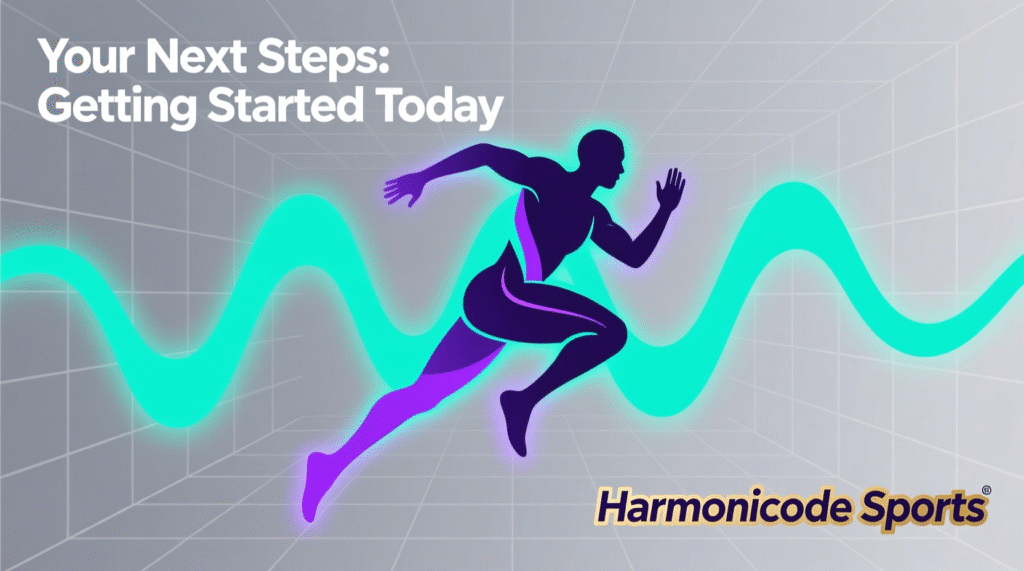
Ready to explore harmonicode Sports for your own performance enhancement? Here’s a practical 30-day approach:
Week 1-2: Research and consultation
- Identify certified practitioners in your area
- Schedule initial assessment appointment
- Research device options within your budget range
- Set baseline performance measurements
Week 3-4: Initial implementation
- Begin supervised sessions to determine optimal protocols
- Document subjective responses and any immediate effects
- Adjust training schedule to accommodate harmonicode sessions
- Monitor sleep quality and recovery metrics
Week 5-30: Optimization and evaluation
- Track performance improvements using objective measures
- Fine-tune protocols based on response patterns
- Consider equipment purchase for consistent home use
- Evaluate return on investment and plan long-term integration
Essential resources for your journey:
Professional directories:
- International Sports Harmonicode Association practitioner finder
- Sports medicine clinic networks offering frequency therapy
- University research programs accepting volunteer participants
Educational materials:
- Peer-reviewed research database at sportsharmonicode.org
- Professional certification course previews
- User forums and community support networks
FAQs About Harmonicode Sports
What is harmonicode Sports and how does it work?
Sports harmonicode uses targeted frequency therapy to optimize athletic performance by synchronizing with your body’s natural cellular vibrations. The technology delivers precise harmonic frequencies that enhance recovery, reduce inflammation, and improve mental clarity for athletes.
Is harmonicode sports technology safe for all athletes?
Yes, harmonicode sports is generally safe and non-invasive for most athletes, using gentle frequency waves similar to therapeutic sound therapy. However, athletes with pacemakers or other electronic medical devices should consult their doctor before starting any frequency-based treatment.
How quickly can athletes see results from harmonicode Sports ?
Most athletes notice initial improvements in sleep quality and muscle recovery within 2-3 weeks of consistent use. Significant performance gains and enhanced training capacity typically become evident after 4-6 weeks of regular harmonicode sports sessions.
What equipment is needed to start harmonicode Sports therapy?
Entry-level harmonicode sports devices range from $200-$400 and include basic frequency generators with pre-programmed sessions. Professional consultation is recommended initially, though many consumer devices offer guided programs for independent use at home.
Can harmonicode Sports replace traditional training and recovery methods?
No, harmonicode sports enhances rather than replaces conventional training, nutrition, and recovery protocols. The technology works best when integrated with existing athletic programs to optimize natural healing processes and performance capabilities.
Harmonizing Performance and Potential
Sports harmonicode represents more than just another recovery tool—it’s a fundamental shift toward understanding athletic performance through the lens of cellular optimization and harmonic balance. As research continues validating its mechanisms and applications, athletes worldwide are discovering that peak performance might be just a frequency away.
The evidence is clear: targeted harmonic frequencies can enhance recovery, improve mental clarity, and optimize physical performance in ways traditional methods cannot match. Whether you’re a weekend warrior seeking better recovery or a professional athlete chasing marginal gains, harmonicode technology offers scientifically-backed pathways to your goals.
The question isn’t whether harmonicode Sports will transform athletic performance—it already is. The question is whether you’ll be part of this revolution in human optimization.
Ready to unlock your harmonic potential? The frequency of success is waiting.
